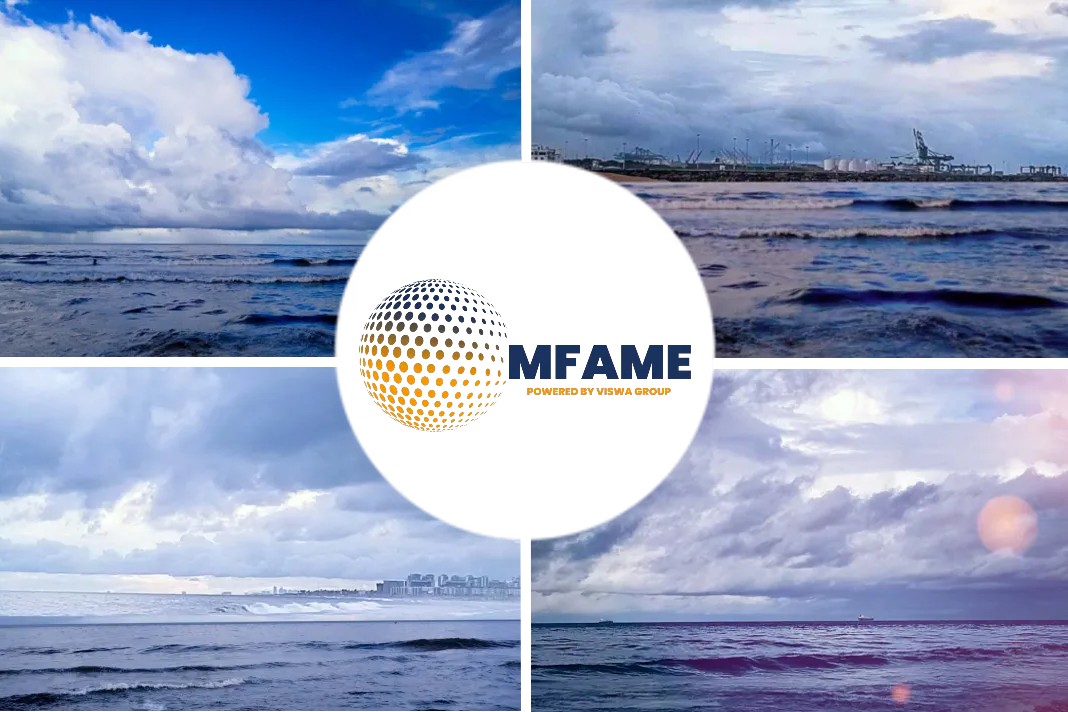- An expert panel provided insight into what is required for advanced vessel maintenance during Riviera Maritime Media’s Ship system condition monitoring for smart vessel maintenance webinar.
- They discussed pathways for adopting smart vessel maintenance to reduce the risk of issues with onboard systems causing downtime.
- Condition monitoring will be increasingly needed as shipowners and operators slow ships to reduce fuel consumption and emissions.
Owners can optimise maintenance across a fleet using digitalisation technologies and analysis, says an article published on Riviera website.
Webinar by Riviera
An expert panel provided insight into what is required for advanced vessel maintenance during Riviera Maritime Media’s Ship system condition monitoring for smart vessel maintenance webinar.
This event, sponsored by Wärtsilä, was held 3 February 2022 during Riviera’s Vessel Lifecycle Maintenance Webinar Week, and provided attendees with advice on how to implement condition-based and predictive maintenance schemes.
Panelists of webinar
On the panel were Bernhard Schulte Shipmanagement (BMS) Hellas group technical superintendent Theodore Ioannou, Wärtsilä Marine Power general manager for product management Patrik Strand, MOL LNG Transport (Europe) project technical superintendent Daniel Popa and Geislinger sales manager for digital services Florian Zeitler.
What do they discuss?
They discussed pathways for adopting smart vessel maintenance to reduce the risk of issues with onboard systems causing downtime.
Experts examined the potential of artificial intelligence (AI), machine learning and sensor networks for better maintenance management, real-time condition monitoring, predictive diagnostics and optimising onboard processes.
Mr Popa said a complete enterprise resource planning (ERP) system for ships needs to include interlinked modules to manage machinery maintenance, drydocking, purchasing, accounting, crewing, certification, health, safety, quality and environmental modules.
“Modules are all linked and need to be kept up-to-date,” said Mr Popa. They are used for “managing operations on board, keeping spares updated and analysing data to prevent machinery failures.”
Data from engineroom and bridge systems can be combined for condition-based maintenance and “for improving overall efficiency and reliability,” said Mr Popa.
He explained how MOL is optimising planned maintenance through the ERP modules. Reports and data analysis include monthly work orders, vessel performance and key indicators throughout the fleet, benchmarking operations and condition of equipment on vessels.
Mr Popa said shipowners need to analyse whether they can migrate existing systems or need to implement a new one through inhouse development or purchasing a third-party system.
They should ask whether the system they are considering is fast enough to provide detailed data analytics, is user friendly and approved by classification societies. Also important, is to ensure it complies with the latest international regulations and assess whether its implementation requires upgrades to IT equipment.
“Automation and digitalisation of the shipping industry is the way forward,” said Mr Popa.
Mr Ioannou said BSM uses condition monitoring to optimise its maintenance strategies for owners. “It helps us know the health condition of our machinery, without the need for opening equipment up,” he explained.
“It is a technological asset that can help us depart from reactive maintenance to proactive, and hence reach operational excellence by handing better services to our clients and our clients’ clients.”
Condition monitoring enables BSM to collect data with non-invasive techniques. “And like a good medical doctor, we are able to diagnose a treatment outside the fixed boundaries of a planned maintenance system,” Mr Ioannou said.
BSM can plan better maintenance routines using condition monitoring. “We can achieve better spare prices since we will order them in a timely manner,” he continued. “We can perform corrective actions to expand the asset’s life and increase the time between overhauls.”
Ongoing condition monitoring also helps BSM “avoid unnecessary openings that lead to sudden breakdowns soon after closing the equipment, due to improper mounting,” said Mr Ioannou.
Onshore expertise
Mr Strand said smart maintenance should also involve onshore experts to provide insight to chief engineers and technical superintendents.
“With increasing complexity, more maintenance solutions should have experts involved,” he said. “Key to success is close co-operation between clients and partners to enable smart maintenance.”
Experts can use data and analytics to provide actionable support and verify condition monitoring. “Deviations in operations are highlighted to the expert using both AI- and rule-based detection methods,” said Mr Stand.
Then, experts can provide recommendations to shipowners, managers and crew for onboard maintenance actions.
“We can continue to learn through condition monitoring and enable proactive maintenance,” said Mr Strand.
“With more sensors, we do not want to overwhelm crew with vast amounts of data. They need advice from experts and advances in AI and analytics.”
Wärtsilä provides daily direct contact to experts in technical operational issues for 24/7 remote support. It has a range of collaborative tools and capabilities for supporting case resolution.
Drivetrain monitoring
In his presentation, Mr Zeitler explained the digital services available from Geislinger, which include monitoring powertrain components such as dampers and transmission.
Sensors on this equipment produce data which is transferred to junction boxes on the ship. These combine the data and send it to a processing unit, which feeds information to onboard operator panels and Geislinger’s digital platform.
Ship operators gain remote access through the analytics platform to “powertrain data, to troubleshoot warnings and alarms and detect anomalies,” said Mr Zeitler.
They can visualise key performance indicators and implement predictive maintenance.
Condition monitoring will be increasingly needed as shipowners and operators slow ships to reduce fuel consumption and emissions.
“New rpm ranges on powertrains will increase wear,” said Mr Zeitler. He said regular monitoring and AI-drive analytics will enable owners to detect issues and act to reduce wear on components.
Did you subscribe to our daily newsletter?
It’s Free! Click here to Subscribe!
Source: Riviera






















